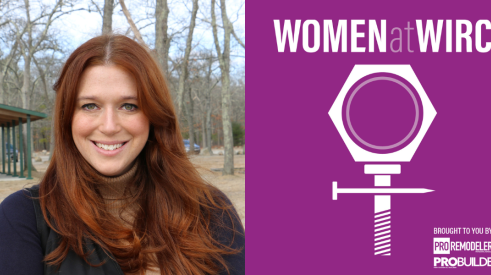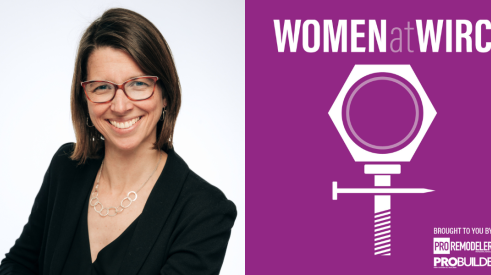When I hear that people are doing free designs; cutting back on marketing and continuing education; not renewing their association dues because of the “economy”; or that homeowners are choosing contractors that are 30 or 40 percent less than competitors, I have to remind myself to not lose focus on value.
When someone makes a purchase, it has to have value to them and that value is based on what they are willing to pay for it. For example, when someone buys a car for $50,000 and they could have purchased one for $30,000, their choice is based on the value they see in that particular car. When someone buys the $30,000 car, they are aware it is not apples to apples and the $30,000 car is a value for them.
The remodeling industry is a fragmented industry; it is difficult to compare “apples to apples.” There are so many levels of products and services and projects are often complicated by the design and/or the existing house conditions. This makes comparisons virtually impossible.
The real question is not simply what does it cost, but what value it will have to the client?
Questions to help determine the value for the client are:
• Will I see more than one version of the initial plan? Will I have input, will I be able to make changes to it?
• Will I see elevations?
• Will I see 3Ds in color?
• Is it computer generated or hand drawn on graph paper?
• Will you be bringing out an electrician and a plumber to evaluate my existing systems to minimize change orders later?
• Will I be allowed to select finishes or are they chosen for me? How many options will I be given?
• If I make modifications to a floor plan will you be bringing out a production manager to assess what needs to be done?. What if it requires an engineer?
• Will I be signing with any allowances or all allowances? If so, how and when will I know the complete cost?
• How long will this process take? How many meetings will we have? Who will be at these meetings?
All of these questions will help your client determine what is valuable to the them. By you answering these questions, the client will be better educated, you will have a better outcome, better communication, better upfront expectations, less stress and a better relationship with the homeowner. It is your job to educate your consumer. Find out what will provide value for them and agree to what it will cost.
Stephen Covey uses a great analogy: “Stopping and sharpening the saw.” In his example, it is ridiculous that a lumberjack would not stop and sharpen his saw to cut faster and be more effectively. Often, if we don’t take the time to invest in education and balancing our life, we too will become dull and burned out.
Why do I bring this up? Sometimes it is hard to stop and look around at what we are doing — to see the value to ourselves, our family, our company, and/or our client; to do things not because they appear to cost less up front or because our competitors are doing it, but because it brings better value to all the stakeholders.
The second part is education. If we lose a sale because they perceive the job is 30 to 40 percent less, it may be our failure to communicate/educate why. Often remodeling companies are operating at a single digit profit, say 5 percent on a good day, so when something is 35 percent less and the consumer thinks it is apples to apples, whose responsibility is it to educate them?
As we start this New Year and you have to make some decisions on what you are doing, I challenge you to be conscious about your choices when you buy things and what is of value to you. Some things are easier from a business side. You can decide by the return on investment, for example, of $10,000 in training that could net an increase of $200,000 in revenue at the same gross profit.
How do you measure not renewing a membership? Let’s go back to the Sharpen the Saw analogy: Is it a group that renews your energy? Will you learn things that you could implement in your business? Could you meet people that could help you in your business?
Ask yourself, what value this brings to me or my organization and make your decision. It might or might not be a dollar equivalent. In the end, it is not what something costs; it is the value it has to the buyer.
When someone makes a purchase, it has to have value to them and that value is based on what they are willing to pay for it.
Add new comment
Related Stories
How to Create a World-Class Remodeling Team
Great remodeling companies position themselves for the future with the right players
Everyone Should Have a Number: KPIs for Your Design Build Team
Measuring key performance indicators guides your team to success while creating accountability and ownership
How to Revamp Your Pre-Construction Process
Experiencing too much slippage and delays? See how Bridget Bacon of Red House Design Build solved these issues by improving the remodeler's pre-construction process
How This Remodeler Revamped Their Pre-Construction Process
Bridget Bacon of Red House Design Build outlines how she helped transform the pre-construction process for improved finances and morale
Building A Small Projects Division from the Ground Up
Through hard work and careful strategy, Harth Home Services has seen big growth
A Mindset of Serving Others
A research study shows surprising results about what makes us take ownership of our work.
3 Keys to Successful Team Management
On this episode of Women at WIRC, hear Laura Burnes delve into her approach to leadership and project management, in addition to sharing insights into Adams + Beasley Associates' winning culture.
4 Steps to Prep Your Business for Contraction
How a remodeling company plans ahead for the worst of times (and the best of times)
Helping Remodelers 'Get Their House In Order'
From remodeler to NARI executive to industry consultant, Diane Welhouse uses her expertise to help business owners













